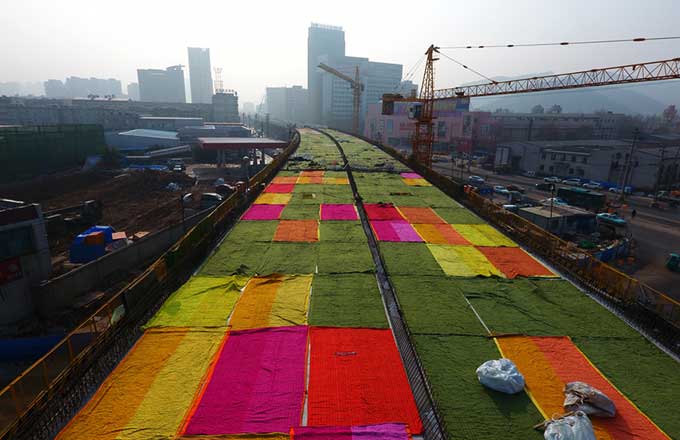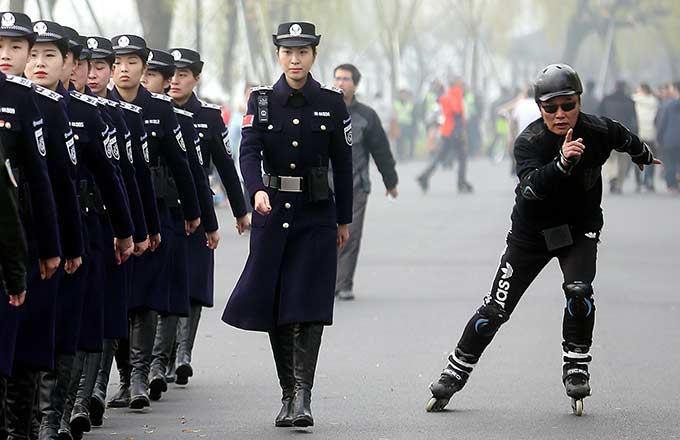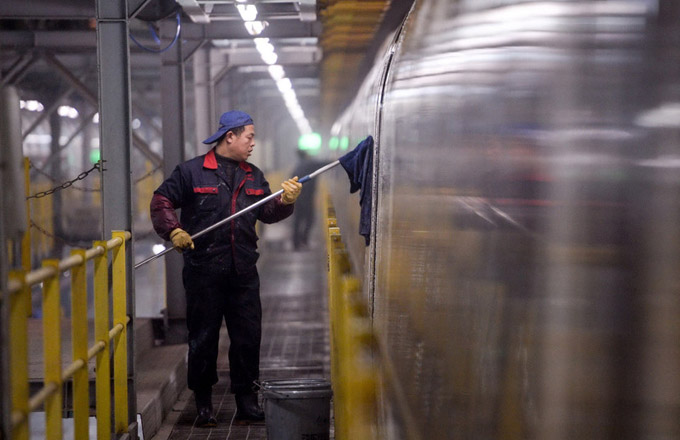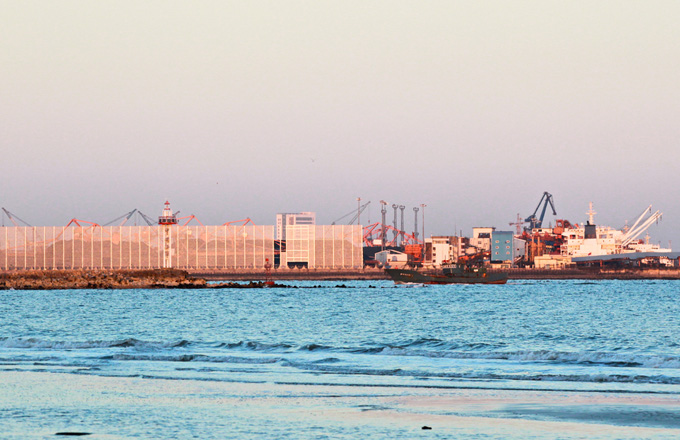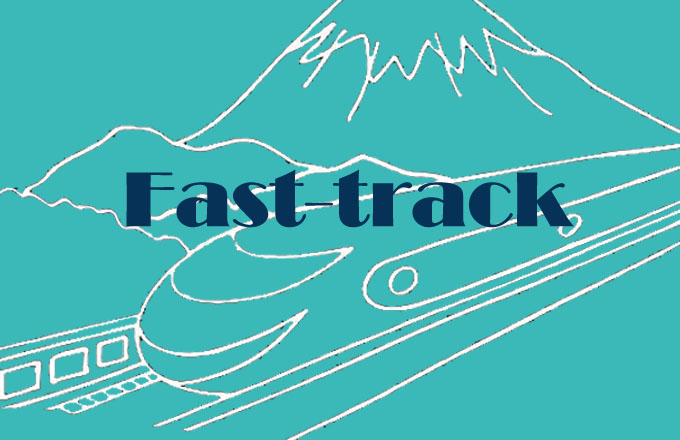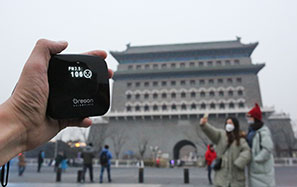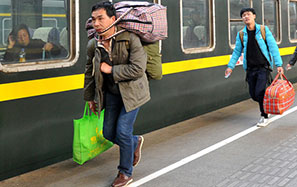Bullet train network still moving at speed
 |
|
An attendant welcomes passengers to the Zhengzhou-Xuzhou high-speed service in August.Provided To China Daily |
The high-speed grid of four north-south lines and four east-west lines is on course to meet a 2008 target to complete the work by 2020.
"The highlight of the year was that the high-speed rail grid, with four north-south lines and four east-west lines, is taking shape," said Yu Zhanfu, principal of the Beijing office of Roland Berger Strategy Consultants. "In addition to opening more lines, the high quality of operations, such as the punctuality of departures and arrivals, is very impressive."
Last year, nearly 99 percent of bullet trains departed on time and more than 95 percent arrived on time, according to the CRC.
In July, two Chinese-designed bullet trains passed in opposite directions at world-record speeds of 420 km/h during a test run conducted by the corporation.
"The success of the test demonstrates that China has mastered comprehensive knowledge of the bullet train's core technologies," said Zhou Li, director of the CRC's science and technology administration department. "It also shows that China's high-speed train technology ranks among the most advanced in the world, and even leads the world in some technologies."
The test measured the trains' performance, particularly the traction, braking and software systems, which all employ Chinese technology.
In addition to setting a technological record, the number of passengers hit a record high in August.
The corporation's trains have carried about 5 billion passengers since 2008, and the number of people using the high-speed network has risen by 30 percent every year.
Last year, more than 1.4 billion trips were made on China's bullet trains, accounting for more than 52 percent of total passenger numbers, according to CRC data
On Dec 29, Yang Yudong, head of the National Railway Administration, told a media briefing that during the period of the 13th Five-Year Plan, China will invest 3.5 trillion yuan ($503 billion) to expand the railway network and accelerate development, and by 2020, high-speed rail lines will stretch 30,000 km as part of a final targeted network of 150,000 km.
In July, the National Development and Reform Commission, the nation's top economic planner, issued an updated national railway development plan that envisions a 175,000-km rail network by the end of 2025, by which time the country will have 38,000 km of high-speed track, according to the plan. Moreover, by 2030, the nation's rail network will expand to nearly 200,000 km, including 45,000 km of high-speed lines.
"We will accelerate the construction of railways in China's central and western regions, and we will also boost the expansion of intercity and suburban rail links," said Zhang Dawei, deputy head of the Ministry of Transport's planning department. "By the end of 2020, more than 80 percent of mainland cities with populations of at least 1 million will be served by high-speed railways."





